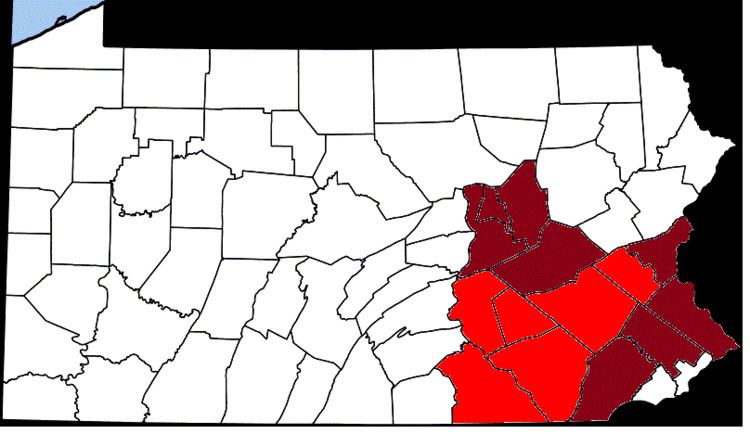Pennsylvania Dutch English is a dialect of English that has been influenced by Pennsylvania German. It is largely spoken in the South Central area of Pennsylvania, both by people who are monolingual (in English) and bilingual (in Pennsylvania German and English). The dialect has been dying out, as non-Amish younger Pennsylvania Germans tend to speak modern General American English. Very few non-Amish members of these people can speak the Pennsylvania German language, although most know some words and phrases. The World War II Generation was the last generation in which Pennsylvania Dutch was widely spoken, outside of the Old Order Amish and Old Order Mennonite communities.
Pennsylvania Dutch English differs from standard American English in various ways. Some of its hallmark features include the following:
Widespread devoicing of obstruents.The use of certain vowel variants in specific phonological contexts.The use of Pennsylvania German verb and noun stems in word construction.Specific intonation patterns for questions.Special placement of prepositional phrases in sentences (so that "Throw some hay over the fence for the horse" might be rendered "Throw the horse over the fence some hay").The use of "ain't" and "not" or "say" as question tags.The use of "still" as a habitual verbal marker.Use of the word "yet" to mean "still," such as "do you work at the store yet?" to mean "do you still work at the store?"Use of terms such as "doncha know" and "so I do" or "so he does" at the end of declaratory sentences.Use of the word "awhile" at the end of sentences proposing simultaneous actions (e.g. "Go get the tea out of the pantry; I'll start boiling the water awhile.").The use of "tree" instead of "three" to describe the number "3".Omitting "to be" from the passive construction in an infinitive following "needs" or "wants"( e.g. "the car needs cleaned" instead of "the car needs to be cleaned").Other calques and idioms include:

